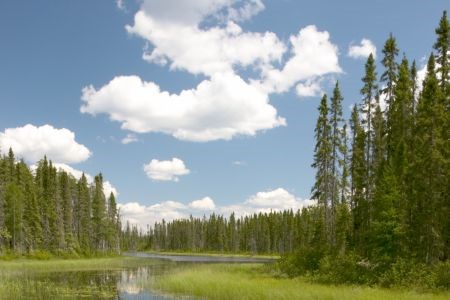Clara Lauziere admits she had little faith that non-timber forest products could be the salvation for the forestry industry.
The general manager of the Northeast Superior Forest Community (NSFC) came from an economic development background and never seriously believed hundreds of jobs could be created by harvesting low-bush blueberries and bog cranberries, fiddleheads and ox-eye daisies, birch syrup and morel mushrooms.
"I wasn’t a big believer in it," said Lauziere.
"You’re going to tell people who worked in a mill their whole life that now they’re going to pick blueberries?"
But with the forestry industry mired in a slump for most of a decade with waves of mill closures and lost jobs, something needs to change in the way Northern communities look at their fibre basket, said Lauziere.
It wasn’t until Lauziere journeyed out to Lac St. Jean, Que. and viewed a sustainable land management system called agroforestry that she saw something that could be duplicated in northeastern Ontario.
In the Saguenay region, the market demand for lowbush blueberries is so strong that patches of forest are stripped to allow the berries to naturally proliferate before the plots are allowed to regenerate back into forests in an endless cycle.
But Lauziere was surprised to find this $120-million Quebec industry that employed thousands didn’t offer much on the value-added processing side.
"It’s just straight pick and ship."
She hopes to tweak that in a bit in northeastern Ontario. "Our region would love to see what other value-added opportunities that we can do here." The Northeast Superior Forest Community is a non-profit group driven by the mayors of Chapleau (the organization’s headquarters), Dubreuilville, Hornepayne, Manitouwadge, Wawa, White River and the chiefs of nine First Nation communities.
They’re out to strike partnerships, attract investment and encourage entrepreneurship across the entire spectrum of the area’s forestry sector.
Lauziere believes non-timber forest products (NTFP) hold huge potential for businesses ranging from self-employment opportunities to multi-million dollar commercial networks.
"In Nova Scotia, blueberries have taken over from the forestry sector."
In analyzing the forest as a diverse and sustainable resource, Lauziere’s group is looking at NTFP as part of a broader "root-to-tree-top" strategy. Adding value to NTFP adds jobs.
"If it’s going to be harvest-and-ship, the businesses (created) are going to be smaller. But if there’s an opportunity to do processing, that adds value to the region’s economic potential."
Through a market identification study with Royal Roads University in British Columbia, wild food producers and distributors have called Lauziere’s Chapleau office looking to buy blueberries, birch syrup and Saskatoon berries, the natural food products most in demand. But getting a firm handle on how much of a resource is out there is a monumental task.
"Once (these companies) look at the natural resources of this area, they start to get excited because they know there’s huge potential to supply markets," said Lauziere.
There’s been no shortage of government forestry papers lauding the North’s potential of NTFPs, but progress, business-wise, remains at the fledgling stage.
There are a handful of NTFP entrepreneurs working out there that Lauziere hopes to round up into a growers’ and harvesters’ co-operative to market regional products.
One well-known operation underway is a Canada Yew processing plant in Chapleau. In Wawa, Trevor Laing has started a 220-acre commercial blueberry plantation. Laing’s plantation is the first of seven sites that the organization wants to establish.
To help ease some of Laing’s financial risk, the Northeast Superior Forest Community secured government money to buy equipment to clear land that eventually will be circulated to other start-ups.
"If we develop a large network of blueberry plantations, we have a bigger influence on the market and we can have more consistent supply," said Lauziere.
She’s looking for more entrepreneurs to step forward.
Once a stable of NTFP entrepreneurs is developed, product can be shipped out to regional markets in Timmins and Sault Ste. Marie. In the future, Lauziere doesn’t rule out freezing blueberries and shipping them to Toronto.
Lauziere said one area where they’re lacking is practical, on-theground knowledge from those who have worked in NTFP.




